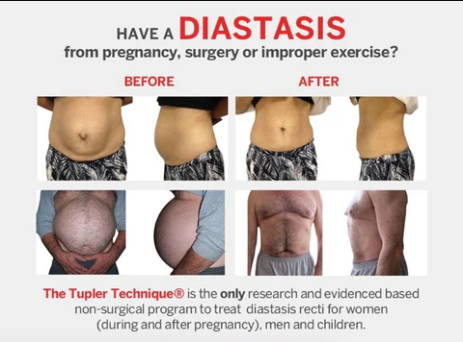Understanding Diastasis Recti Symptoms and How To Effectively Manage It
Identifying Diastasis Recti: Key Indicators to Watch For
Diastasis recti, a term that signifies the separation of the recti muscles – the outermost layer of the abdominal wall – can be identified by several distinctive symptoms. If you notice a protruding belly that resembles a pregnant belly, an "outie" belly button, or a bulge that looks akin to half a football when you engage your core muscles, it is quite likely you are experiencing diastasis recti. These symptoms are also associated with umbilical hernia, which can occur as a consequence of diastasis recti, or abdominal separation.
Comprehensive Overview of Diastasis Recti Signs and Symptoms
The condition referred to as diastasis recti involves a widening gap between the belly muscles, specifically the rectus abdominis. This separation leads to the stretching of the linea alba, the connective tissue that binds these muscles, making it thinner and less capable of effectively supporting the belly button, back, and internal organs. This weakening of support is a pivotal concern because it compromises the core strength necessary to sustain proper back support and organ positioning.
A broad spectrum of symptoms arises when the core's supportive structure shifts from muscular strength to the less robust connective tissue. These symptoms may encompass:
- Chronic back pain
- Altered posture leading to discomfort
- Complications with pelvic floor function
- Pelvic discomfort
- Gastrointestinal disruptions, including bloating and constipation
Women who have been through childbirth are particularly susceptible to diastasis recti, with the condition often worsening with subsequent pregnancies.
Furthermore, abdominal trauma in conjunction with diastasis recti might result in the connective tissue detaching from the abdominal wall, potentially leading to a ventral hernia – a situation that might necessitate surgical intervention for diastasis recti repair.
What Exactly is Diastasis Recti?
This condition is characterized by the partial or total separation of the 'six-pack' muscles at the stomach's midline. While it frequently occurs during and after pregnancy due to uterine expansion, diastasis recti is not exclusive to this phase. Factors such as improper heavy lifting and excessive or inappropriate abdominal exercises can also contribute to its development.
The Spectrum of Symptoms
Aside from the obvious abdominal protrusion, diastasis recti may present with other symptoms, including lower back pain, postural issues, constipation, and bloating. In pregnant women, these symptoms may not be apparent until the latter trimesters, when a noticeable bulge may emerge. It is crucial to seek medical attention if severe discomfort arises.
Postpartum Considerations
Following childbirth, the most evident sign is a persistent belly bulge. It's important to perform self-checks for diastasis recti or seek a healthcare provider for an assessment using more precise methods like calipers or ultrasound. Check out this article HERE to know more about postpartum
Identifying the Causes
The root cause of diastasis recti is excessive intra-abdominal pressure. During pregnancy, muscles and connective tissues stretch due to the enlarging uterus, facilitated by hormones such as relaxin and estrogen. Studies suggest that traditional risk factors like BMI, pregnancy weight gain, and maternal age may not be as significant as once thought.
Treatment Program
Developed by Julie Tupler, RN, the Tupler Technique® is a comprehensive program designed to heal the weakened Linea Alba, the connective tissue at the center of the diastasis. This technique, detailed in our Introductory Program, involves exercises and the use of a Diastasis Rehab Splint® to facilitate the healing process. Statistics from 372 individuals show an average 55% decrease in diastasis size within 18 weeks of following this program.
Recommendations for What to Avoid
To prevent exacerbating diastasis recti, certain activities, including traditional core exercises like crunches and sit-ups, should be avoided until full recovery. A comprehensive list of contraindications will be provided.
Potential Complications
Unaddressed diastasis recti can lead to issues like compromised trunk stability, persistent pain, and pelvic floor dysfunction. In extreme cases, hernias may develop.
Prevention Strategies
Building a strong core pre-pregnancy can serve as a preventive measure. Proper technique during abdominal exercises is crucial to minimize the risk of developing diastasis recti.
Future Outlook
Physical therapy specializing in postpartum recovery can play a significant role in improving symptoms.




